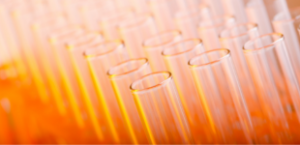Chlorosilanes are chemical compounds whose molecule contains a silicon atom bonded to at least one chlorine atom. The silicon atom forms up to four bonds, and in addition to chlorine, it can also be bonded to hydrogen or alkyl groups.

Obtaining chlorosilanes and silocon products
Chlorosilanes are reactive chemical compounds produced on an industrial scale through the process of silicon reacting with chloromethane under the influence of high temperatures and with the use of copper catalysts. This process takes place in reactors. As a result of the process, a raw mixture of several liquid chlorosilanes is obtained, which are separated by means of distillation. Chlorosilanes obtained in this way are building blocks from which various silicone substances are produced. The following types of methylchlorosilanes are used for the production of silicones: trimethylchlorosilane, dimethyldichlorosilane and methyltrichlorosilane. Basic silicone products (oils, rubbers, resins) are obtained by the hydrolysis and polycondensation reactions of chlorosilanes. The structure of these products possesses four different groups, depending on the type of chlorosilanes used.
Chlorosilanes used on industrial scale
Compounds of high significance among chlorosilanes are methylchlorosilanes, and dimethylchlorosilanes in particular. They are monomeric intermediates used in the production of silicone polymers, as well as coatings for silicon and glass surfaces. Industrially used chlorosilanes also include phenylchlorosilanes, vinylchlorosilanes, tetrachlorosilanes (also known as silicon tetrachloride) and trichlorosilanes. The PCC Group product portal includes silicon tetrachloride and ultrapure silicon tetrachloride. They are colourless liquids with a characteristic, sharp odour. They damage metals and tissues when they have contact with humidity. They are compatible with such chemical compounds as: toluene, benzene, chloroform, carbon tetrachloride, light petroleum, ether and hydrochloric acid. However, they are not explosive and do not undergo oxidation. Silicon tetrachloride is used, among others, as the main raw material in the production of fumed silica. This compound is the precursor in the production of semiconductors and silicon metal. Ultrapure silicon tetrachloride with a very high purity of 99.9999% is used in the production of optical fibers, semiconductors, silicon anodes, or in photovoltaics for the production of solar panels.
Chlorosilane reactivity
The characteristic feature of all chlorosilanes is their high reactivity with air or water humidity, which results in hydrogen chloride production. Moreover, during such reactions trichlorosilanes and methyldichlorosilanes produce combustible, gas hydrogen and hazardous residues. When chlorosilanes are not exposed to contact with water, they can be stored in carbon steel tanks and barrels.